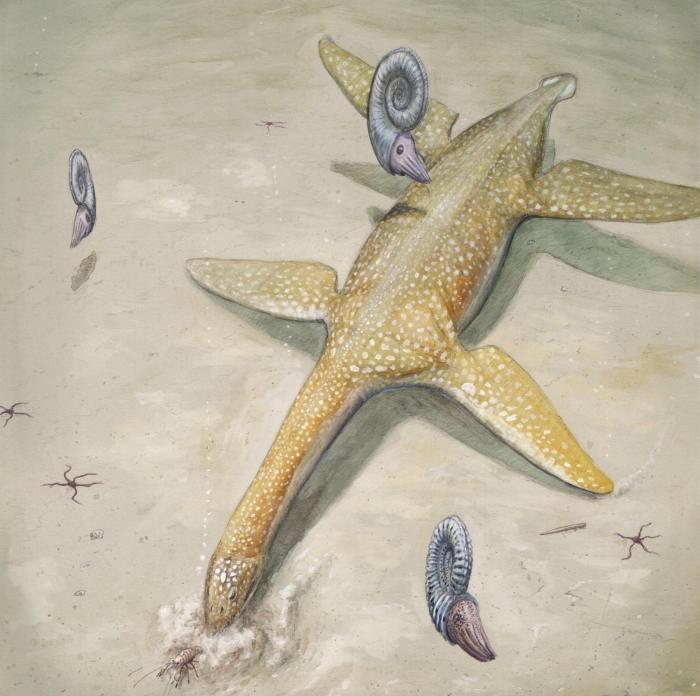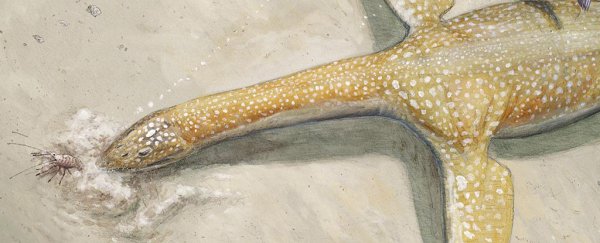So many new species aren't discovered straight out of the ground, but after having been under our noses for decades. Such is the case with Arminisaurus schuberti, a newly discovered 'sea monster' that swam the Jurassic oceans 190 million years ago.
Poor Arminisaurus had a dreadful journey. The fossilised bones were originally discovered in a clay pit near Bielefeld in Germany, all the way back in the early 1980s. But before it was found, the intact and complete skeleton was broken up by mining machinery. Only 40 percent of the bones could be recovered.
It spent some time languishing in disarray. It was only salvaged by the intervention of avid amateur palaeontologist Siegfried Schubert, who painstakingly and thoroughly cleaned the bones and sent them to the Naturkunde-Museum Bielefeld in 2015.
The plesiosaur was named in honour of Schubert, and of the Germanic chieftain Arminius.
"Plesiosaurs were amongst the most successful marine predators from the Age of Dinosaurs," said researcher Sven Sachs.
"Some, such as the famous Liopleurodon, were colossal predators up to 15 metres (50 feet) long. They were the equivalent of white sharks and killer whales in the oceans today."
 Joschua Knüppe/Uppsala University
Joschua Knüppe/Uppsala University
Arminius was just a little fellow, around 3-4 metres (10-13 feet), and probably hunted small prey such as fish and squid. However, an almost complete scapula bone shares a feature called the scapular shelf in common with plesiosaurs from the Cretaceous period that followed the Jurassic.
This discovery could help palaeontologists better understand the evolutionary radiation of plesiosaurs.
"Arminisaurus is significant because it dates from a timeframe early in the Jurassic, during which we have very few identifiable plesiosaur fossils," said researcher Benjamin Kear of the Museum of Evolution at Uppsala University.
"Only two other plesiosaur fossils have ever been named from this mysterious interval in plesiosaurian evolution, making Arminisaurus a very important new addition for the global record of the group."
The research was published in marine paleontology journal Alcheringa.
